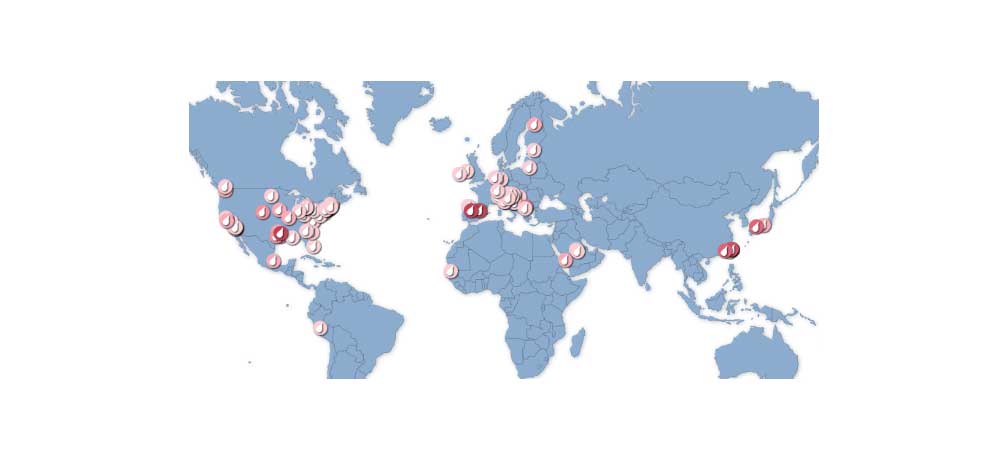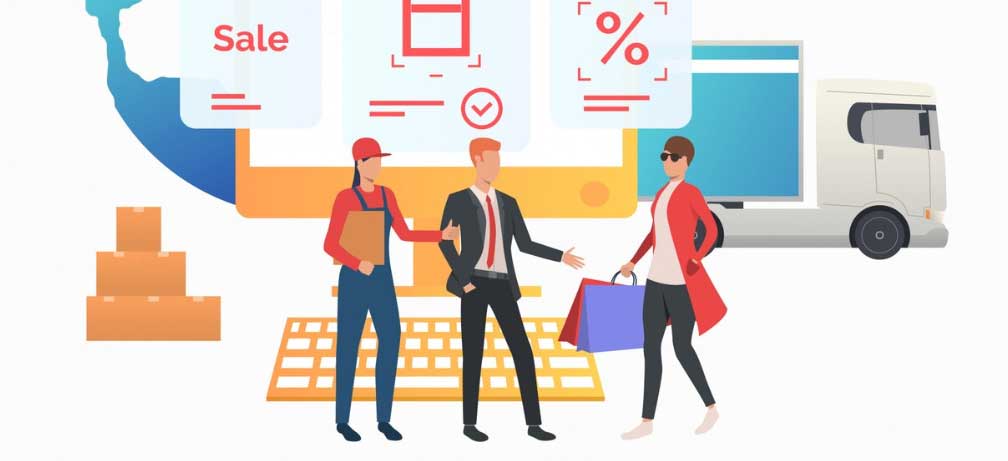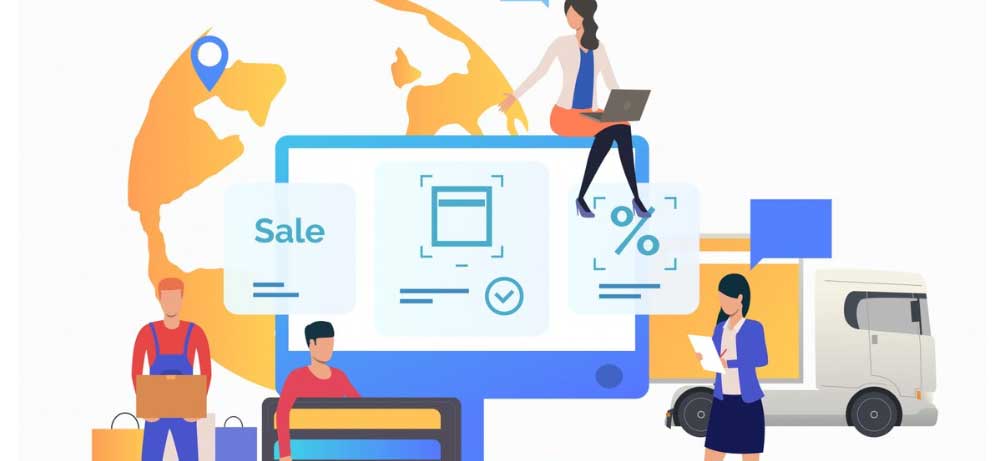Expanding overseas opens up whole new markets and revenue streams, but it also means navigating VAT, GST, and state-by-state sales tax. For Shopify B2B brands, the stakes are even higher. No one wants to be blindsided by unexpected fees or fines just as orders start pouring in from abroad.
At Ecommerce Partners, we’ve helped dozens of brands move from “domestic only” to “selling worldwide,” and we know the tax setup is a big piece of that puzzle.
Below is a concise, step-by-step guide (with source links) covering why tax compliance matters, plus how to configure VAT for Europe, GST for Canada/Australia, and U.S. sales tax in Shopify. Each section also explains when to bring Ecommerce Partners onboard, so you can focus on growth instead of surprises.
1. Why Tax Compliance Matters on Shopify B2B
Basic Concept
Getting your tax setup for you Shopify B2B store right isn’t just about ticking a box it’s about providing a smooth checkout experience for your customers and avoiding penalties. When taxes display accurately at checkout, shoppers trust your brand, and you don’t end up with surprise bills or fines later.
Why It Gets Tricky
- Different rules by region: Each country (and U.S. state) has its own registration thresholds, filing calendars, and rate structures. It’s not a one-size-fits-all.
- Changing regulations: Tax authorities update rates, thresholds, and documentation requirements frequently—keeping up can feel like a full-time job.
- Combined fees: In the U.S., you may owe both state and local sales tax. In the EU, you might need to manage standard, reduced, or zero rates for various products.
- Cross-border nuances: Selling B2B vs. B2C in Europe involves different VAT treatments (e.g., B2B zero-rating with valid VAT IDs). In Canada, digital goods may have different GST/HST rules than physical products.
When to Bring in Ecommerce Partners
- You’re registering in multiple regions at once. We’ll map out where you need to register, prepare your filings, and set up Shopify so you collect correctly from Day 1.
- You’re struggling to keep up with changing rates or rules. We monitor updates across EU, Canada, Australia, and U.S. states—then adjust your Shopify settings or recommend the right tax apps.
- You need cleaner reporting. We’ll set up custom tax-report templates (and connect to apps if necessary) so you have month-by-month snapshots per region.
Helpful links
- Shopify B2B’s overview on collecting sales tax.
- U.S. Small Business Administration’s sales tax guide.
2. VAT (Value-Added Tax) for Shopify B2B Merchants
Basic Setup (The Easy Part)
- Enable European VAT: In your Shopify admin, go to Settings → Taxes and duties and toggle on “European VAT.” Shopify will then auto-apply each country’s standard rate at checkout.
- Register for OSS if needed: Once you exceed €10,000 in annual EU sales, sign up for the One-Stop Shop (OSS) so you can file one VAT return for all EU orders instead of registering separately in each member state.
Why It Gets Tricky
- Multiple VAT rates by product: Some items have reduced rates (e.g., 7% on books in Germany vs. 19% standard). You’ll need to override rates per product category.
- Zero-rated or exempt transactions: Intra-EU B2B sales (with a validated VAT ID) are zero-rated, but you must collect and store that VAT ID to prove eligibility. Exports outside the EU also require proof of shipment.
- Digital services rules: If you sell software downloads, subscriptions, or online courses, you charge VAT based on the customer’s country under the Mini One-Stop Shop (MOSS) rules, even if you’re seated outside Europe.
- Invoicing & record-keeping: Some EU states mandate specific invoice formats (e.g., France, Italy). Default Shopify invoices might not suffice; you’ll need a compliant invoicing solution.
- Currency conversions: If you price in USD but remit in EUR, exchange-rate fluctuations can change how much VAT you owe each filing period.
When to Bring in Ecommerce Partners
- You sell mixed-category goods across multiple EU countries. We’ll audit your catalog, assign correct rates, and ensure each product is tagged properly.
- You have both B2B and B2C EU customers. We’ll set up VAT-ID validation at checkout, configure zero-rating for eligible B2B orders, and handle all OSS registration and reporting.
- You offer digital products or subscriptions. We’ll guide you through MOSS compliance, set up tax-inclusive pricing if needed, and integrate a MOSS-friendly invoicing tool.
- You need compliant VAT-style invoices. We can implement or customize an invoicing app so each EU sale meets local invoice-format requirements.
- You want help with ongoing filings & audits. Whether you need a one-time setup or full VAT outsourcing (collecting, filing, and record-keeping), we’ve got you covered.
3. GST (Goods and Services Tax) on Shopify B2B
Basic Setup (The Easy Part)
- Add Canada/Australia in Shopify: Under Settings → Taxes, include Canada or Australia as separate regions in your Shopify B2B store.
- Specify the GST/HST rate: Enter 5% for Canada (or the correct HST breakdown if you’re registered in multiple provinces) and 10% for Australia. Shopify will then calculate GST at checkout.
- Register when required:
- Canada: Register for a GST/HST account if your worldwide taxable revenue exceeds CAD 30,000 over any four consecutive quarters.
- Australia: Register once your annual sales to Australian customers exceed AUD 75,000.
Why It Gets Tricky
- Provincial HST complexities (Canada): Some provinces combine GST and provincial sales tax into one HST rate (e.g., 13% in Ontario). You need to set up province-specific rates if you have a Canadian address or inventory there.
- Digital vs. physical products: Digital goods (e-books, downloadable software) have different GST/HST rules in Canada—some provinces zero-rate digital publications but tax other services. In Australia, certain e-services also carry special rules.
- Duty/GST estimates vs. actual obligations: Even if Shopify shows an import-GST estimate at checkout, you still must register in-country and file returns; the estimate doesn’t replace actual GST registration.
- Filing & remittance calendars differ: Canada’s GST/HST may require monthly, quarterly, or annual filings based on your revenue. Australia typically requires quarterly Business Activity Statements (BAS).
Currency conversions impact numbers: If your store prices in USD but you remit in CAD or AUD, exchange-rate shifts can change your payable GST each period.
When to Bring in Ecommerce Partners
- You have inventory or a Canadian/Australian address. We’ll configure province/province-level HST (Canada) or state-level GST (Australia), so you collect the exact rate.
- You sell both digital and physical goods. We’ll classify items correctly (e.g., e-books vs. physical prints) so each product uses the right tax treatment.
- You need help with registration & filings. We can handle or guide you through CRA or ATO registration, determine your filing frequency, and assist with BAS or GST returns.
You want a streamlined monthly tax report. We’ll set up Shopify reports (or integrate a tool like Avalara AvaTax or TaxJar) to give you ready-to-file numbers each period.
4. U.S. Sales Tax on Shopify B2B
Basic Setup (The Easy Part)
- List your nexus states: In Settings → Taxes, add each U.S. state where you have sales tax “nexus.” Shopify B2B will then auto-calculate the state and local rates for orders shipping to those addresses.
- Understand nexus triggers:
- Economic nexus: Most states require registration if you exceed $100,000 in annual sales or 200 transactions in that state (thresholds vary).
- Physical nexus: Storing inventory in a state (e.g., through a U.S. warehouse or 3PL) or having an office creates a tax obligation.
Why It Gets Tricky
- Local add-ons vary wildly: Beyond the base state rate, city, county, and special-district taxes can add up. A single zip code in Texas might carry 8.25% total, while another is 6.5%. You need precise, postal-code-level rate sourcing.
- Marketplace facilitator laws: If you sell via a marketplace or use a 3PL that’s technically the seller of record, the marketplace might collect and remit sales tax—but you still need to track where you have nexus.
- Multiple filing calendars: Each state has its own filing frequency—monthly, quarterly, or annually—based on your sales volume. Missing a deadline means penalties and interest.
- Rate updates are constant: States adjust rates mid-year; if Shopify isn’t updated, you might under- or over-charge customers.
Audit risk: Sales tax audits can reach back several years. Without clean records showing collected and remitted tax per state, you could face unexpected liabilities.
When to Bring in Ecommerce Partners
- You’re selling into multiple U.S. states. We’ll map your nexus footprint, set up Shopify to auto-calculate exactly by zip code, and recommend or integrate a rate-automation app (TaxJar, Avalara) if you have dozens of states.
- You use a 3PL or marketplace facilitator. We’ll clarify who’s responsible for collection and ensure your Shopify settings align (e.g., DDP vs. DDU shipping).
- You need help with filings and paperwork. We can guide you through each state’s registration, set up reminders for return deadlines, and either produce ready-to-file reports or handle filing on your behalf.
You want to minimize audit exposure. We’ll review your historical sales data, flag any potential gaps, and advise on improving record-keeping so you’re audit-ready.
Helpful links
5. Quick-Fire Tips & Ecommerce Partners’ Takeaways
Basic Setup (The Easy Part)
- Use Shopify B2B’s built-in tax settings: Toggle on region-specific taxes under Settings → Taxes so your checkout shows the correct VAT, GST, or U.S. sales tax automatically.
- Monitor threshold triggers: Keep an eye on EU sales (€10,000), Canadian GST (CAD 30,000), Australian GST (AUD 75,000), and U.S. state nexus rules. Shopify Markets (if available on your plan) can alert you when you’re nearing a country’s threshold.
Why It Gets Tricky
- Cross-region orchestration: Tracking your sales simultaneously in EU, Canada, Australia, and multiple U.S. states demands constant attention to changing rules, rates, and filing requirements.
- Data fragmentation: Without apps or consistent reporting, your raw Shopify CSV might not easily separate EU VAT from Canadian GST or break down U.S. state tax collections.
Regulation changes: Tax authorities can update rates, compliance rules, or invoice formatting requirements overnight—left unchecked, your store risks noncompliance.
When to Bring in Ecommerce Partners
- You want a one-stop shop for all regions. We’ll give you a unified tax roadmap across EU, Canada, Australia, and U.S. states, then implement and maintain it.
- You prefer to outsource filings and ongoing compliance. We can be your full-service partner: collecting, reporting, filing returns, and ensuring you meet every deadline, no matter where you sell.
You need custom reporting or accounting integration. We’ll configure Shopify’s tax reports (or integrate with your accounting software) so your finance team can reconcile quickly and accurately.
Taking your Shopify B2B store overseas is exciting—new customers, bigger orders, brand recognition across continents. But without properly setting up VAT, GST, and U.S. sales tax, you risk expensive penalties and unhappy customers. Shopify’s built-in tax toggles cover the basics, but real-world compliance often involves multiple rates, exemptions, invoicing rules, and filing calendars. If you’re selling in more than one region (EU, Canada, Australia, or various U.S. states), Ecommerce Partners can shoulder the complexity—so you stay focused on your products and growth, learn more here.
📞 Ready to sell worry-free worldwide? Contact Ecommerce Partners today for a free tax-compliance review and let us handle the details.
Happy selling!




